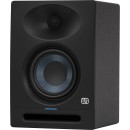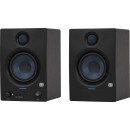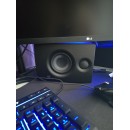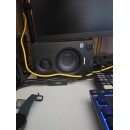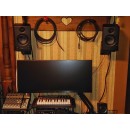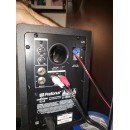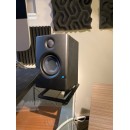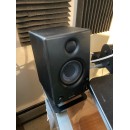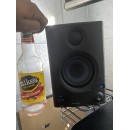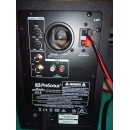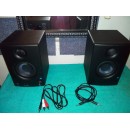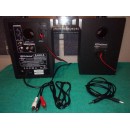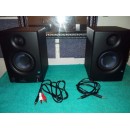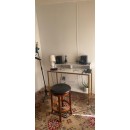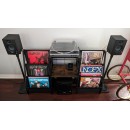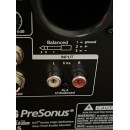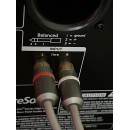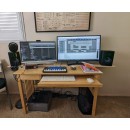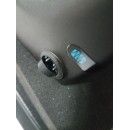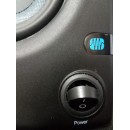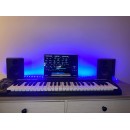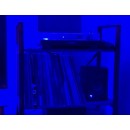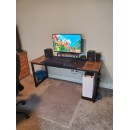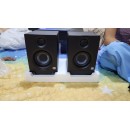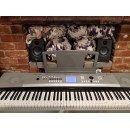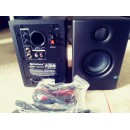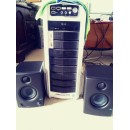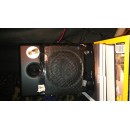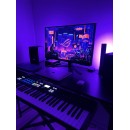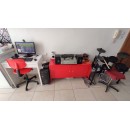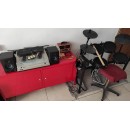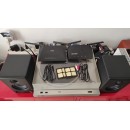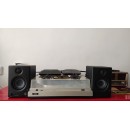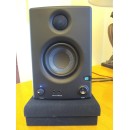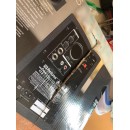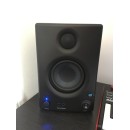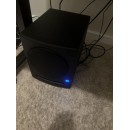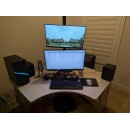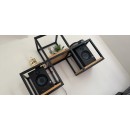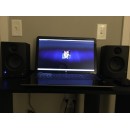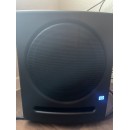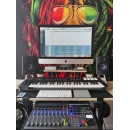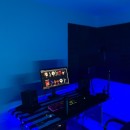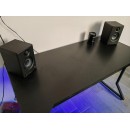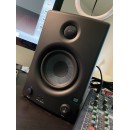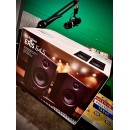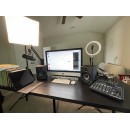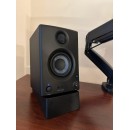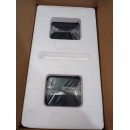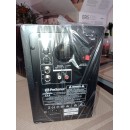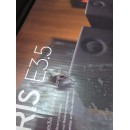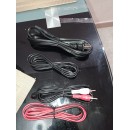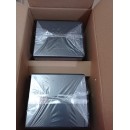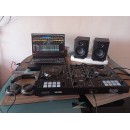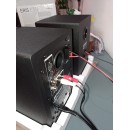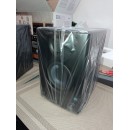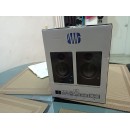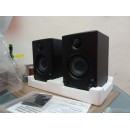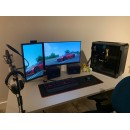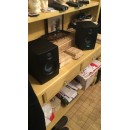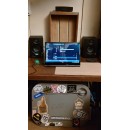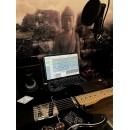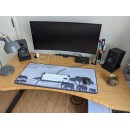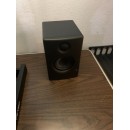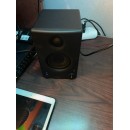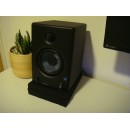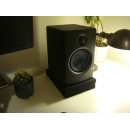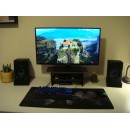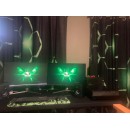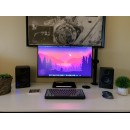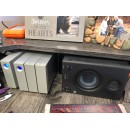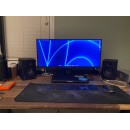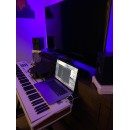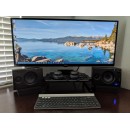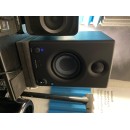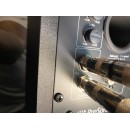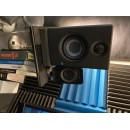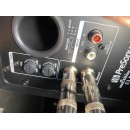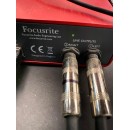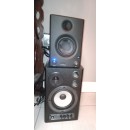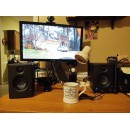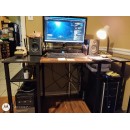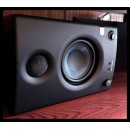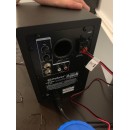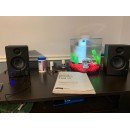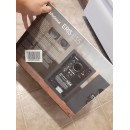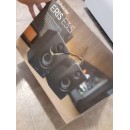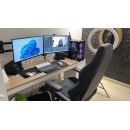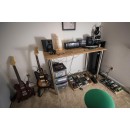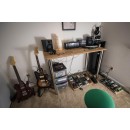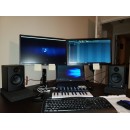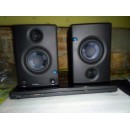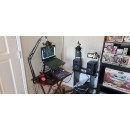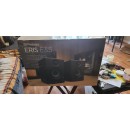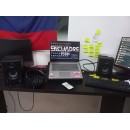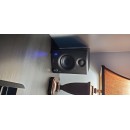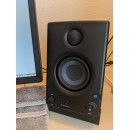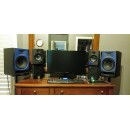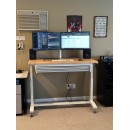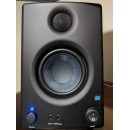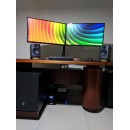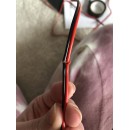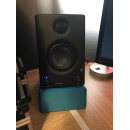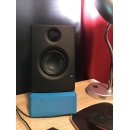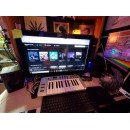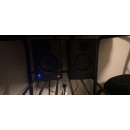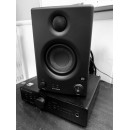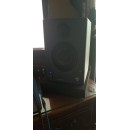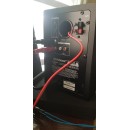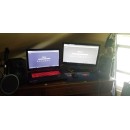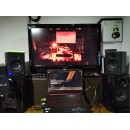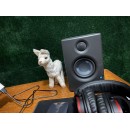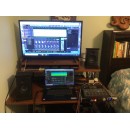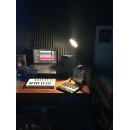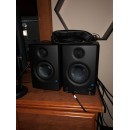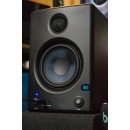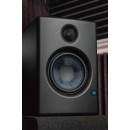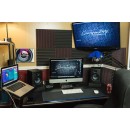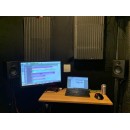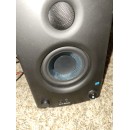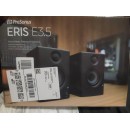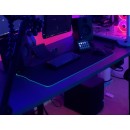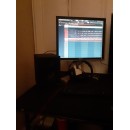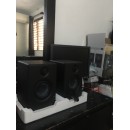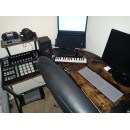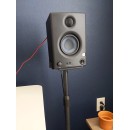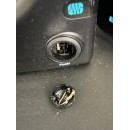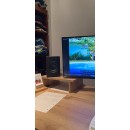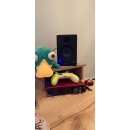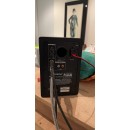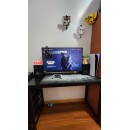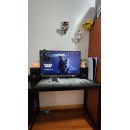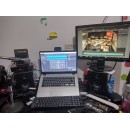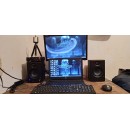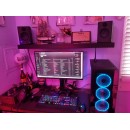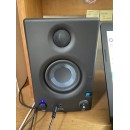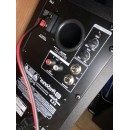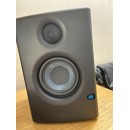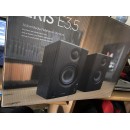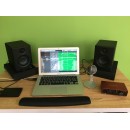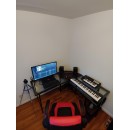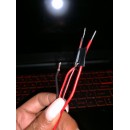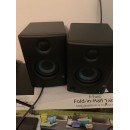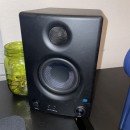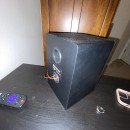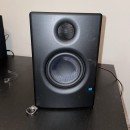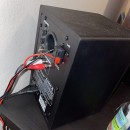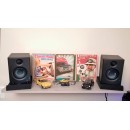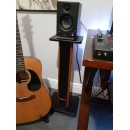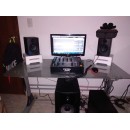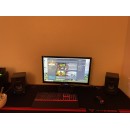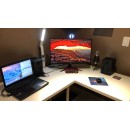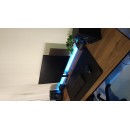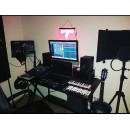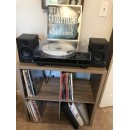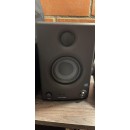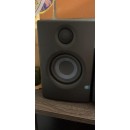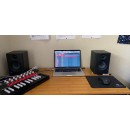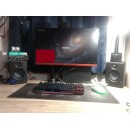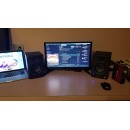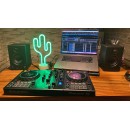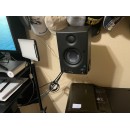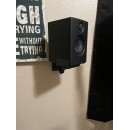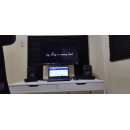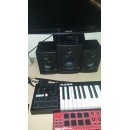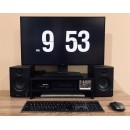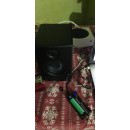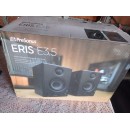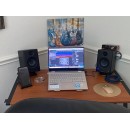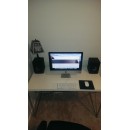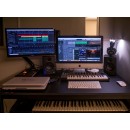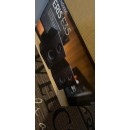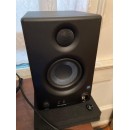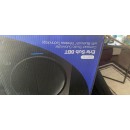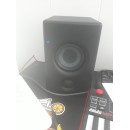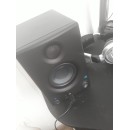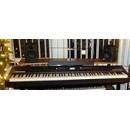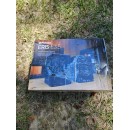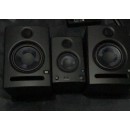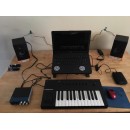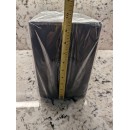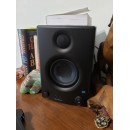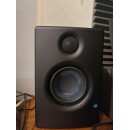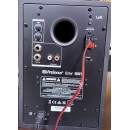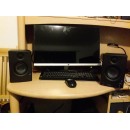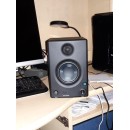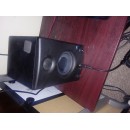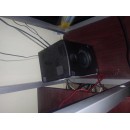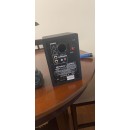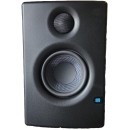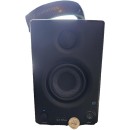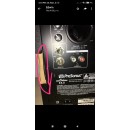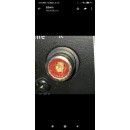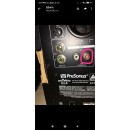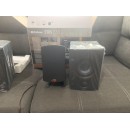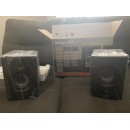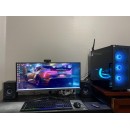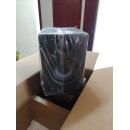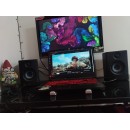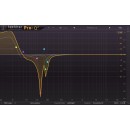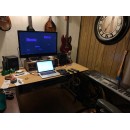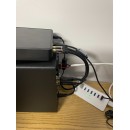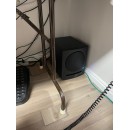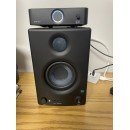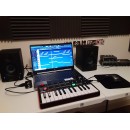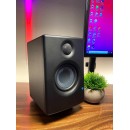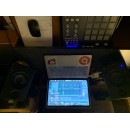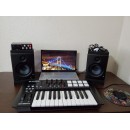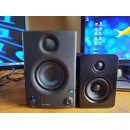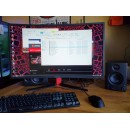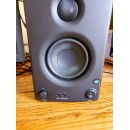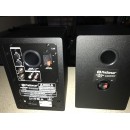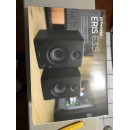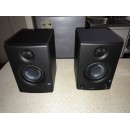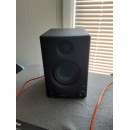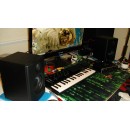PreSonus Eris Studio 4 vs. ERIS 4.5BT: A Comprehensive Comparison
The PreSonus ERIS 4.5BT Studio Monitor Speaker is designed with versatility in mind, offering both professional sound quality and the convenience of wireless connectivity. This model features Bluetooth integration, allowing users to stream audio directly from any Bluetooth-enabled device, making it a versatile choice for both studio and home environments. The speaker is equipped with a 4.5-inch woven composite low-frequency driver and a 1-inch silk dome high-frequency driver, providing a balanced and accurate sound across a wide frequency range. With front-panel volume control and a headphone jack, the ERIS 4.5BT is user-friendly and adaptable to different listening needs.
In contrast, the PreSonus Eris Studio 4 Studio Monitor Speaker focuses on delivering uncompromised sound quality tailored for professional studio applications. This model lacks Bluetooth connectivity, emphasizing a purist approach to audio fidelity. The Eris Studio 4 is equipped with a 4.5-inch low-frequency driver and a 1-inch silk dome tweeter similar to the 4.5BT, but it includes additional acoustic tuning controls to fine-tune the speaker's response to fit the acoustics of any room. This level of customization is ideal for producers and engineers who require precise sound reproduction for mixing and mastering.
Both models share the signature PreSonus sound quality and robust build, but they cater to different user needs. The ERIS 4.5BT offers the added convenience of Bluetooth for those who value connectivity and ease of use, making it suitable for casual listening and multimedia production. Meanwhile, the Eris Studio 4 is tailored for those who prioritize audio accuracy and customization in a studio setting, providing tools to adjust the sound to the specific acoustics of the room. Whether you need a versatile speaker with modern connectivity or a dedicated monitor for professional use, PreSonus offers options to meet diverse audio monitoring requirements.
In the sections that follow, we will delve into a detailed comparison of the PreSonus Eris Studio 4 and the ERIS 4.5BT studio monitor speakers. We'll examine their specifications, highlighting both their strengths and any potential drawbacks, to provide you with a complete overview that will assist you in making an informed decision.
Specifications, Advantages, and Disadvantages
| User Rating Based on Analysis of Reviews | |
|---|---|
|
Show More |
| Pros: | |
|---|---|
|
|
| Cons: | |
|---|---|
|
|
| Find Best Price | Find Best Price |
| Key Specs | |
|---|---|
| Monitor Type & Configuration | |
| Active 2-Way | Active 2-Way |
| Total Power Output | |
| 50 W | 25 W RMS per Monitor |
| Tweeter | |
| 1x 1" / 25.4 mm Silk Dome | 1x 1" / 25.4 mm Silk Dome |
| Woofer | |
| 1x 4.5" / 11.4 cm Composite Cone |
1x 4.5" / 11.4 cm Cone |
| Audio I/O | |
| 1x RCA Unbalanced Input 1x 1/4" TRS Balanced Input 1x XLR 3-Pin Balanced Input |
2x 1/4" TRS Balanced Line Input 1x Stereo 2RCA Unbalanced Line Input 1x 1/8" / 3.5 mm TRS Unbalanced Line Input 1x 1/8" / 3.5 mm TRS Unbalanced Headphone Output 2x Push Terminal Passive Speaker Output |
| Digital Audio I/O | |
| Wireless | |
| Bluetooth | |
The PreSonus ERIS 4.5BT Studio Monitor Speaker is an active 2-way monitor with a total power output of 25 W RMS per monitor. It features a 1-inch silk dome tweeter and a 4.5-inch cone woofer, providing a frequency range from 70 Hz to 20 kHz. This model is equipped with various audio inputs, including 2x 1/4" TRS balanced line inputs, a stereo 2RCA unbalanced line input, and a 1/8" TRS unbalanced headphone output. Additionally, it incorporates Bluetooth connectivity, allowing for wireless audio streaming.Show More
In contrast, the PreSonus Eris Studio 4 Studio Monitor Speaker also features an active 2-way configuration but offers a higher total power output of 50 W. Similar to the ERIS 4.5BT, it contains a 1-inch silk dome tweeter and a 4.5-inch composite cone woofer. The frequency response is consistent with the ERIS 4.5BT, encompassing 70 Hz to 20 kHz. However, the audio I/O options differ slightly, as it includes an XLR 3-Pin balanced input alongside the 1/4" TRS balanced input and RCA unbalanced input. Unlike the ERIS 4.5BT, this model does not support Bluetooth, focusing instead on wired connections.
Overall, while both models share similar design elements and frequency response characteristics, the PreSonus ERIS 4.5BT is tailored for users who prefer wireless capabilities, albeit with lower power output. In contrast, the PreSonus Eris Studio 4 is ideal for those requiring more power and a broader range of wired input options, making it suitable for various studio environments.
| General | |
|---|---|
| Number of Included Monitors | |
| Single Monitor | Stereo Pair |
| Enclosure | |
| Bass-Reflex/Ported | Bass-Reflex/Ported |
| Total Power Output | |
| 50 W | 25 W RMS per Monitor |
The PreSonus ERIS 4.5BT Studio Monitor Speaker comes as a stereo pair, making it ideal for those looking to create a comprehensive sound setup. This model features a bass-reflex/ported enclosure, which enhances low-frequency response, providing a fuller sound profile. Each monitor delivers a total power output of 25 W RMS, resulting in a combined output that is suitable for small to medium-sized studio environments.Show More
In comparison, the PreSonus Eris Studio 4 Studio Monitor Speaker is offered as a single monitor. Like the ERIS 4.5BT, it also utilizes a bass-reflex/ported enclosure design, ensuring a robust low-end response. However, this model boasts a higher total power output of 50 W, which can provide a more powerful sound experience when used in larger spaces or for applications requiring more volume and clarity.
Ultimately, the choice between these two models depends on specific needs. The ERIS 4.5BT is perfect for those seeking a complete stereo setup with a balanced output, while the Eris Studio 4 offers greater power in a single monitor, making it suitable for users who prefer a more focused listening experience without the necessity for stereo pairing.
| Physical | |
|---|---|
| Color | |
| Black | Black |
| Monitor Orientation | |
| Vertical | Vertical |
| Dimensions (W x H x D) | |
| 7 x 10 x 7.3" / 17.8 x 25.4 x 18.5 cm (Each) | 6.4 x 9.5 x 7" / 162.6 x 241.3 x 177.8 mm (Each) |
| Weight | |
| 8.8 lb / 4.0 kg | 2.0 lb / 0.9 kg (Each) |
The PreSonus ERIS 4.5BT Studio Monitor Speaker features a compact design with dimensions of 6.4 x 9.5 x 7 inches (162.6 x 241.3 x 177.8 mm) and a lightweight build of 2.0 lb (0.9 kg) per speaker. This makes it highly portable and suitable for small studio spaces. The monitor orientation is vertical, allowing for efficient placement on desks or studio stands. It does not include a fan for cooling, which can contribute to a quieter operation during extended use.Show More
In contrast, the PreSonus Eris Studio 4 Studio Monitor Speaker is larger, with dimensions of 7 x 10 x 7.3 inches (17.8 x 25.4 x 18.5 cm) and a considerably heavier weight of 8.8 lb (4.0 kg) per speaker. Like the ERIS 4.5BT, it also features a vertical monitor orientation, making it suitable for similar setups. The increased size and weight may provide enhanced sound projection and bass response, appealing to users looking for a more robust studio monitor experience.
Both speakers come in a sleek black color, ensuring they fit well in any studio environment. However, the significant differences in size and weight suggest that the ERIS 4.5BT may be better suited for mobile setups or smaller spaces, while the Eris Studio 4 may be preferred for stationary setups where sound quality and projection are prioritized.
| Packaging Info | |
|---|---|
| Package Weight | |
| 10.08 lb | 12.675 lb |
| Box Dimensions (LxWxH) | |
| 12.9 x 11.2 x 9.4" | 19.2 x 13.4 x 9.6" |
When comparing the PreSonus ERIS 4.5BT Studio Monitor Speaker and the PreSonus Eris Studio 4 Studio Monitor Speaker, one of the key differences lies in the package weight. The ERIS 4.5BT has a package weight of 12.675 lb, making it slightly heavier than the Eris Studio 4, which has a package weight of 10.08 lb. This difference in weight may be indicative of the additional features or build quality in the ERIS 4.5BT model.Show More
In terms of box dimensions, the PreSonus ERIS 4.5BT measures 19.2 x 13.4 x 9.6", while the PreSonus Eris Studio 4 is more compact at 12.9 x 11.2 x 9.4". The larger dimensions of the ERIS 4.5BT may suggest a more robust design or larger drivers, which could influence sound performance and overall listening experience.
Overall, both models have their unique attributes with the ERIS 4.5BT being heavier and larger, potentially offering enhanced audio capabilities, while the Eris Studio 4 presents a more lightweight and compact option for those with space constraints.
| Customer Images | |
|---|---|
| Videos | |
|---|---|
|
|
|
